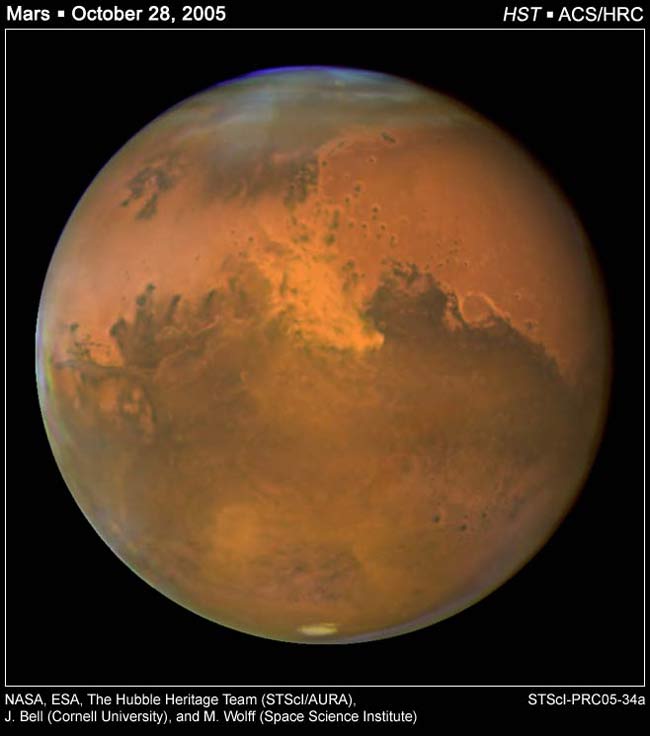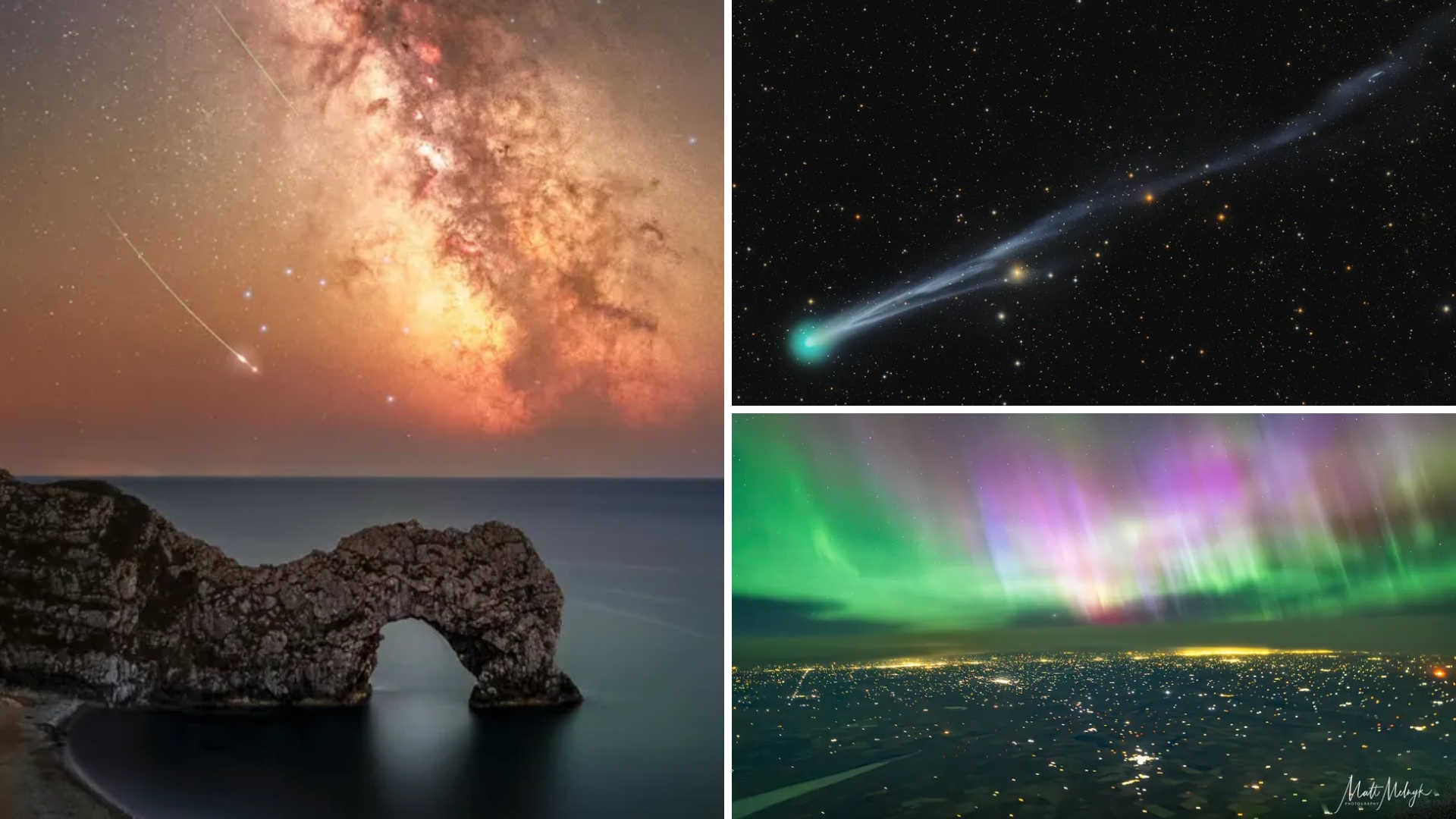Hubble Snaps Photos of Giant Martian Dust Storm

When Mars orbited close to Earth this past weekend, many skywatchers noticed a large dust storm raging across its surface. NASA's Hubble Space Telescope took detailed images that were released today.
The large regional dust storm appears as the brighter, redder cloud in the middle of the planet's disk in the Hubble photo. This storm has been kicking up dust along the planet's equatorial regions for several weeks, and is about 930 miles (1,500 kilometers) long as measured diagonally. A dust storm that large on Earth would cover Texas, Oklahoma, and New Mexico.
Astronomers say this storm is likely responsible for the reddish, dusty haze and other dust clouds that have been seen across the planet in views from Hubble, ground-based telescopes, and the NASA and ESA spacecraft orbiting the planet recently.
The storm is in close proximity to the NASA Mars Exploration Rover Opportunity's landing site in on the Meridiani Planum. Dust in the atmosphere could block sunlight the rover needs to continue operating at full power.
The image was taken with Hubble's Advanced Camera for Surveys. The smallest resolvable features - small craters and wind streaks - are about 12 miles (20 kilometers) across.
Mars is now in its warmest months, resulting in a smaller than normal south polar ice cap towards the bottom of the image. Bluish water-ice clouds can also be seen along the limbs - the edges of the planet in this image - and in the north polar region at the top.
Mars goes through a 26-month cycle in which its distance from Earth varies. When Mars is closest to Earth, it appears brighter in the sky and is an easy target for telescopes. On Oct. 29th and 30th, Mars and Earth reached the closest point in their orbits since Aug. 2003. The red planet won't be this close again until 2018.
Breaking space news, the latest updates on rocket launches, skywatching events and more!
